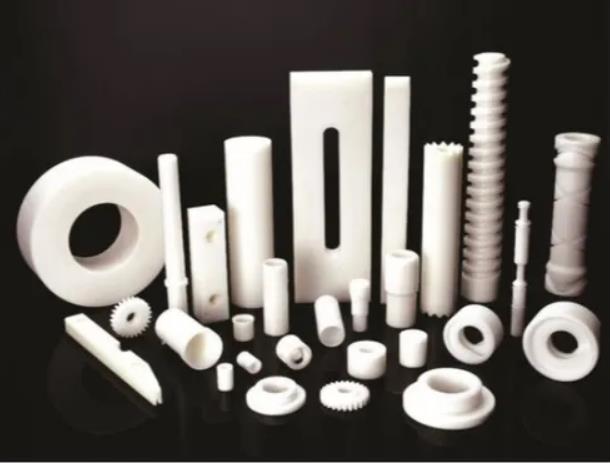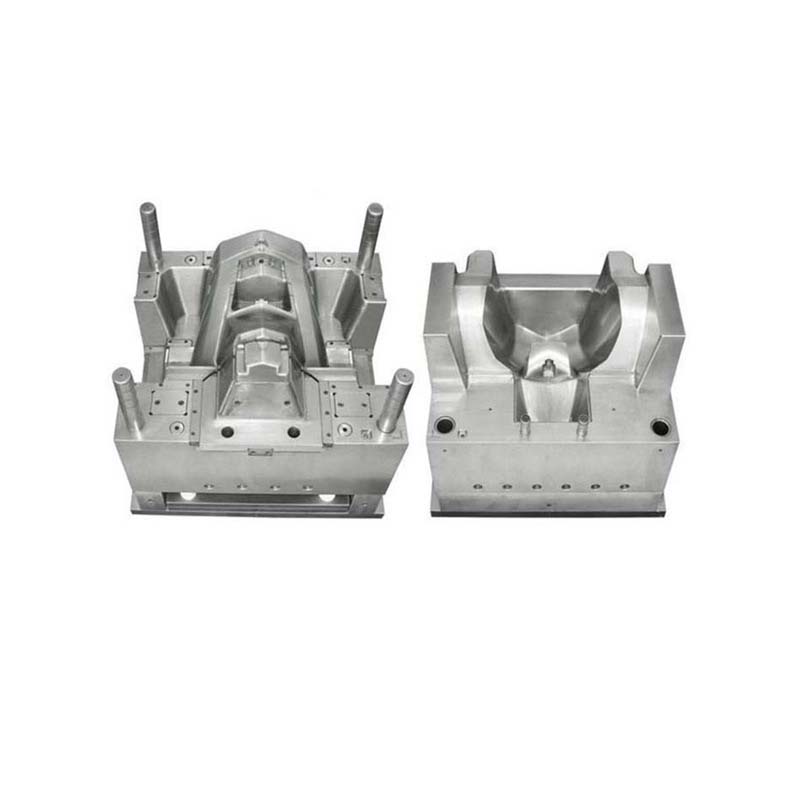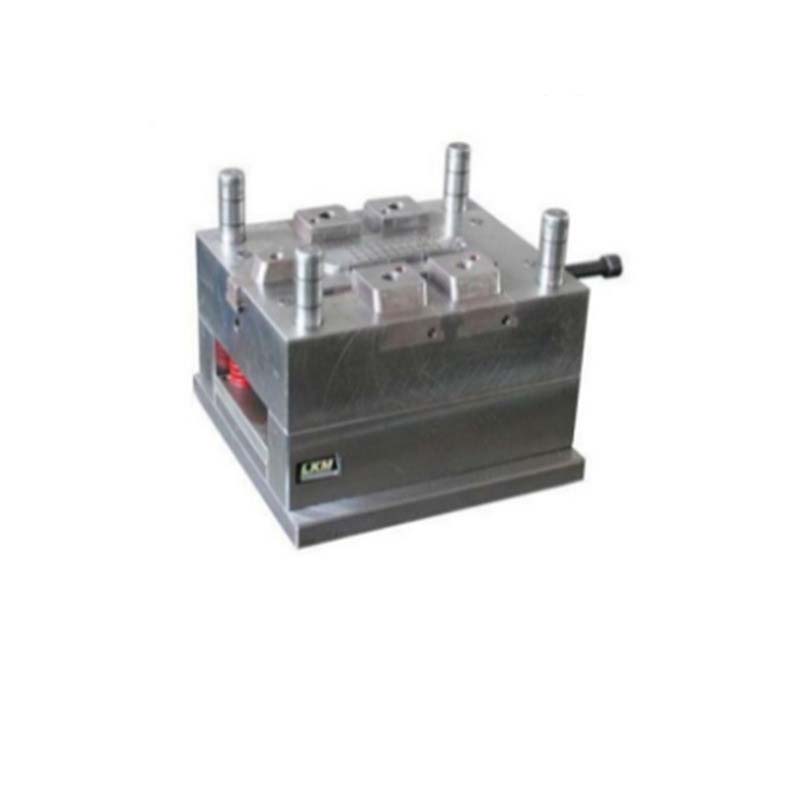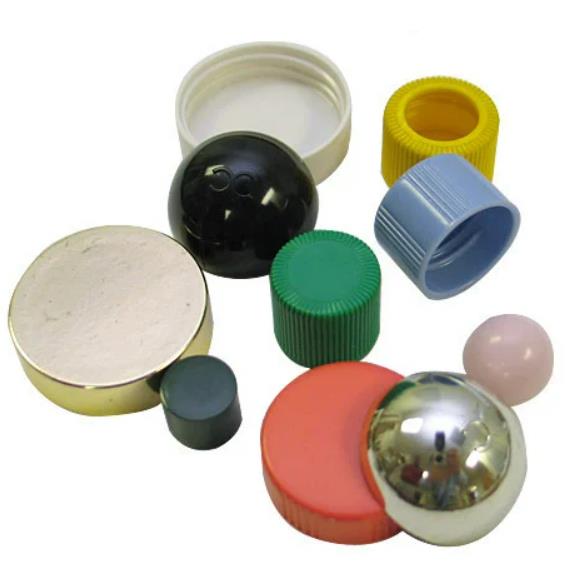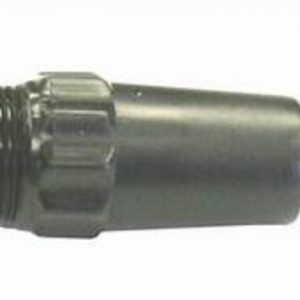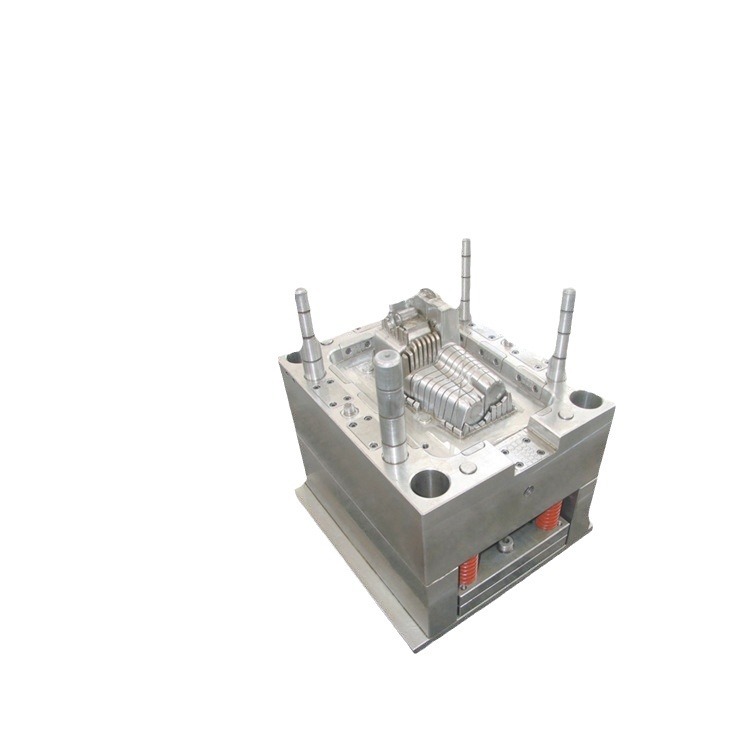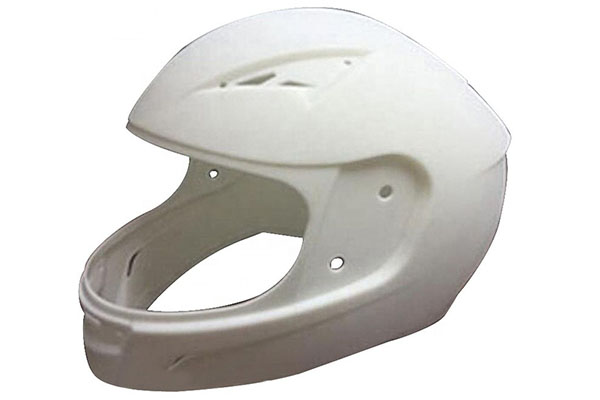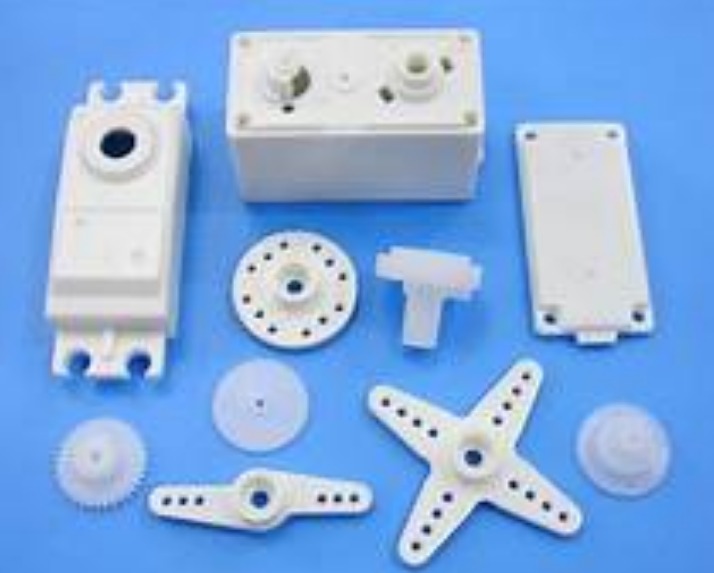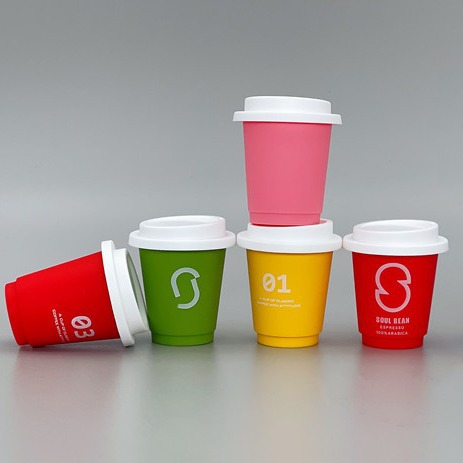Thermoforming Injection Molding: The Mechanics
The Thermoforming Process Unveiled
Thermoforming is a versatile manufacturing process that starts with a flat sheet of plastic. This sheet is first loaded into a thermoforming machine. The initial and crucial step is heating the plastic sheet. High - intensity infrared heaters are commonly used to raise the temperature of the plastic to its softening point. Achieving uniform heating is vital; otherwise, the final product may have thickness variations, uneven textures, or structural weaknesses. For example, if a food - packaging tray is thermoformed with non - uniform heating, thin spots may develop, making the tray prone to breakage during handling.
Once the plastic sheet is uniformly heated and in a pliable state, it is then transferred to a mold. The mold can be either male (positive) or female (negative). There are different ways to form the plastic around the mold. In vacuum thermoforming, a vacuum is created between the plastic sheet and the mold. This causes the softened plastic to be drawn tightly against the mold's surface, taking on its shape. Another method is pressure thermoforming, where compressed air is used to force the plastic onto the mold. After the plastic has been shaped to the mold, it needs to cool down rapidly to set the shape. Cooling channels within the mold can be used to circulate a coolant, such as water, to speed up this process. Once cooled, the formed plastic part is removed from the mold, and any excess material, called trim, is trimmed away, resulting in the final thermoformed product.
Injection Molding: A Deep Dive
Injection molding is a highly efficient manufacturing process for producing plastic parts in high volumes. It begins with plastic granules, which are typically made of thermoplastic materials such as polyethylene, polypropylene, or ABS. These granules are fed into a hopper, which then delivers them to a heated barrel. Inside the barrel, a reciprocating screw plays a key role. As the screw rotates, it not only conveys the plastic granules forward but also compresses and melts them. The temperature inside the barrel is precisely controlled in different zones. For instance, the rear zone may be set at a lower temperature to prevent premature melting of the incoming granules, while the front zone is set at a higher temperature to ensure complete melting.
Once the plastic is fully melted and in a viscous, fluid - like state, the screw then acts as a piston. It applies high pressure to inject the molten plastic through a nozzle and into a closed mold cavity. The mold is designed with the exact shape of the desired final product, including all its intricate details, such as holes, threads, and undercuts. Maintaining the right injection pressure is critical. Too low a pressure may result in incomplete filling of the mold cavity, while too high a pressure can cause flash (excess plastic that seeps into the mold's parting lines) or damage the mold.
After injection, the plastic in the mold cavity is held under pressure for a short period, known as the holding or packing stage. This ensures that the plastic fills all the corners of the mold and compensates for any shrinkage as the plastic cools. During the cooling stage, the mold is cooled, usually by circulating water through channels within the mold. The cooling time is carefully calculated based on the thickness and material of the part; thicker parts generally require longer cooling times. Once the plastic has solidified, the mold opens, and the finished part is ejected, ready for further post - processing if needed, such as trimming, polishing, or assembly.
Comparing Thermoforming and Injection Molding
Cost - Efficiency Showdown
When it comes to cost - efficiency, thermoforming and injection molding have distinct characteristics. Here is a detailed comparison in tabular form:
| Cost Aspect | Thermoforming | Injection Molding |
| Equipment Cost | Generally lower. A basic thermoforming machine can cost around \(50,000 - \)150,000, depending on its size and capabilities. | Higher. High - volume injection molding machines can range from \(100,000 to over \)1 million, especially for large - scale, high - precision models. |
| Mold Cost | Lower. Molds for thermoforming are often made of materials like aluminum or even wood in some cases. A simple thermoforming mold might cost \(2,000 - \)10,000. | Significantly higher. Injection molding molds are typically made of steel to withstand high pressures. A complex injection mold can cost upwards of $50,000 and even reach several hundred thousand dollars for very intricate designs. |
| Material Cost | Usually, thermoforming uses plastic sheets. The cost per unit mass of the plastic sheet material can be relatively lower, especially for common plastics like polyethylene or polypropylene. | Injection molding uses plastic granules. While the base material cost per unit mass may be similar in some cases, the need for high - quality, precisely formulated granules for complex parts can increase costs. Also, injection molding may have higher material waste during the process due to runners and sprues. |
| Production Cycle Cost | Shorter production cycles for simple parts. For example, a basic thermoformed product can be produced in as little as 10 - 30 seconds per cycle. This results in lower labor and equipment - usage costs per unit in high - volume production of simple items. | Longer production cycles, especially for complex parts. A typical injection - molded part may have a cycle time of 30 seconds to several minutes, depending on the part's complexity, cooling time, and the size of the mold. The longer cycle times can increase the overall cost per unit, especially for high - volume production. |
Product - Suitability Analysis
The choice between thermoforming and injection molding also depends on the type of product being manufactured.
- Thermoforming - Suitable Products:
- Simple Shapes: Ideal for products with relatively simple shapes, such as food - packaging trays, shallow containers, and disposable cups. For instance, the plastic trays used to package fresh fruits and vegetables in supermarkets are often thermoformed. The process can quickly and cost - effectively produce these simple, large - surface - area items.
- Large - Scale and Thin - Walled Products: Thermoforming is well - suited for creating large - scale products like advertising displays or large - format plastic panels. It can also produce thin - walled products without sacrificing too much on strength, which is beneficial for applications where weight reduction is crucial, such as in some consumer - goods packaging.
- Injection Molding - Suitable Products:
- Complex Shapes: Injection molding excels at producing parts with complex geometries, such as the intricate internal components of electronic devices, toys with moving parts, and automotive interior parts. These parts often have undercuts, fine details, and precise tolerances that can be accurately replicated through injection molding.
- High - Strength and Precision - Required Products: For products that require high strength and dimensional accuracy, like engine components in the automotive industry or medical device parts, injection molding is the preferred choice. The high - pressure injection process ensures that the plastic fills all the cavities of the mold precisely, resulting in parts with consistent quality and strength.
Quality - Related Distinctions
Quality is a crucial factor, and thermoforming and injection molding offer different quality - related characteristics.
- Dimensional accuracy:
- Thermoforming: Generally has lower dimensional accuracy compared to injection molding. Tolerances in thermoforming can be around ±0.5 - 1.0 mm, depending on the complexity of the part and the manufacturing conditions. This is because the plastic sheet is stretched during the forming process, which can cause some variation in thickness and shape.
- Injection Molding: Can achieve very high dimensional accuracy, with tolerances as low as ±0.05 - 0.1 mm for high - precision molds. The high - pressure injection and the use of rigid steel molds ensure that the plastic takes on the exact shape of the mold cavity, resulting in parts with consistent and accurate dimensions.
- Surface quality:
- Thermoforming: May have a slightly textured or less - smooth surface finish, especially if the mold surface is not highly polished. There can also be some visible marks or lines where the plastic sheet was stretched or where the mold edges contacted the plastic. However, with proper mold preparation and post - processing techniques like sanding or polishing, the surface quality can be improved.
- Injection Molding: Can produce parts with a very smooth and high - quality surface finish. The molten plastic fills the mold cavity evenly, and if the mold has a highly polished surface, the resulting part will have a mirror - like finish. This makes injection - molded parts suitable for applications where aesthetics are important, such as consumer electronics casings.
- Product strength:
- Thermoforming: The stretching process in thermoforming can sometimes lead to uneven distribution of material, which may result in areas of varying strength. However, for many applications, the strength of thermoformed parts is sufficient. Reinforcement techniques, such as adding ribs or using composite materials, can be employed to increase the strength.
- Injection Molding: Generally produces parts with more uniform strength. The high - pressure injection ensures that the plastic is evenly distributed throughout the mold cavity, and the use of high - quality materials and proper processing conditions can result in parts with excellent mechanical properties and high strength.
Applications Galore
Everyday Products Shaped by These Processes
Thermoforming and injection molding are all around us in our daily lives. In the world of packaging, thermoforming is a go - to process. The clear plastic clamshells that hold electronics, such as small speakers or wireless earbuds, are often thermoformed. These clamshells provide an attractive and protective packaging solution. They are lightweight, cost - effective to produce, and can be easily customized to fit the shape of the product inside. Another common example is the disposable plastic cups used at events or in offices. These cups are thermoformed from plastic sheets, and the process allows for quick production of large quantities.
Injection molding, on the other hand, is used to create a vast array of small, intricate parts. Take a look at your pen; the body, cap, and even the ink cartridge components are likely injection - molded. The high precision of injection molding ensures that the parts fit together perfectly, allowing for smooth writing. Toys are also a prime example. Action figures with their detailed facial features, articulated joints, and small accessories are all made through injection molding. The process can replicate the complex shapes and fine details required to bring these toys to life, making them appealing to children and collectors alike. In the automotive interior, many parts like the cup holders, door handles, and dashboard knobs are injection - molded. These parts need to be strong, durable, and have a consistent quality, which injection molding can provide.
Industrial and Specialized Uses
In the industrial and specialized sectors, both thermoforming and injection molding play crucial roles. In the automotive industry, thermoforming is used for larger components like the interior door panels and some exterior body parts. These parts need to be lightweight to improve fuel efficiency while still maintaining structural integrity. Thermoforming allows for the production of large - scale, thin - walled parts that meet these requirements. For example, some car manufacturers use thermoformed plastic for underbody panels, which help to improve aerodynamics and protect the vehicle's underside from road debris.
Injection molding is extensively used in the automotive industry for engine components, such as intake manifolds. These parts need to have high strength, precise dimensions, and excellent heat resistance. Injection molding can produce parts with complex internal channels and cavities, which are essential for the proper functioning of the engine.
In the aerospace industry, injection molding is used to create parts like turbine blades and interior cabin components. The high - strength materials used in aerospace, such as high - performance plastics reinforced with carbon fibers, can be accurately molded into complex shapes through injection molding. These parts need to withstand extreme temperatures, high pressures, and vibrations, and the precision and material - handling capabilities of injection molding make it suitable for such demanding applications. Thermoforming is also used in aerospace for components like aircraft interior panels and some non - structural parts. The ability to produce large, lightweight parts with relatively low tooling costs is an advantage in this industry, where weight reduction is critical for fuel efficiency and overall aircraft performance.
In the medical field, injection molding is used to produce a wide range of products, from syringes and medical device housings to intricate surgical instruments. The high precision and clean production environment of injection molding ensure that these medical products meet strict quality and safety standards. Thermoforming, on the other hand, is used for items like medical trays and some disposable patient - care products. These products need to be cost - effective, hygienic, and easy to produce in large quantities, making thermoforming a suitable choice.
Yigu Technology's Insights
As a non - standard plastic metal products custom Supplier, Yigu Technology deeply understands the significance of Thermoforming Injection Molding. We believe that in the production process, strict quality control is the cornerstone of ensuring product excellence. From the selection of high - quality plastic materials to the precise control of processing parameters, every step is carefully monitored.
In terms of design, innovation is key. Our team of experts is dedicated to creating unique and practical designs that can fully leverage the advantages of these molding processes. For example, in thermoforming, we focus on optimizing the shape of the mold to minimize material waste and improve production efficiency. In injection molding, we strive to design molds that can produce parts with higher precision and better surface quality, meeting the diverse needs of our customers. We are committed to providing customized solutions that not only meet but exceed our customers' expectations, using these molding techniques to bring their ideas to life with the highest quality standards.
FAQs
What are the main differences between thermoforming and injection molding?
Thermoforming starts with a heated plastic sheet that is formed over a mold using vacuum or pressure, while injection molding involves injecting molten plastic granules into a closed mold cavity under high pressure. Thermoforming generally has lower equipment and mold costs, making it suitable for small - batch production and large - scale, simple - shaped products. Injection molding, on the other hand, is more expensive in terms of equipment and mold costs but is highly efficient for high - volume production of complex - shaped, high - precision products.
Which materials are most suitable for thermoforming injection molding?
Common materials suitable for thermoforming include polyethylene (PE), polypropylene (PP), and polyvinyl chloride (PVC). PE is known for its good chemical resistance and flexibility. PP has high heat resistance and is lightweight. PVC offers excellent rigidity and is often used in applications where flame - retardant properties are required. For injection molding, materials like acrylonitrile - butadiene - styrene (ABS), polycarbonate (PC), and nylon are popular. ABS combines good impact resistance, heat resistance, and surface finish. PC has high strength, heat resistance, and transparency. Nylon is valued for its high strength, wear resistance, and low friction.
How can I improve the quality of products made by thermoforming injection molding?
For thermoforming, ensure uniform heating of the plastic sheet to prevent thickness variations. Optimize the mold design to reduce stress concentrations and ensure proper cooling to prevent warping. In injection molding, carefully control the temperature, pressure, and injection speed. Use high - quality molds with proper ventilation to avoid air traps and ensure complete filling of the mold cavity. Regularly maintain the injection molding machine to ensure consistent performance. Also, conduct quality control checks on the raw materials to ensure they meet the required specifications.
